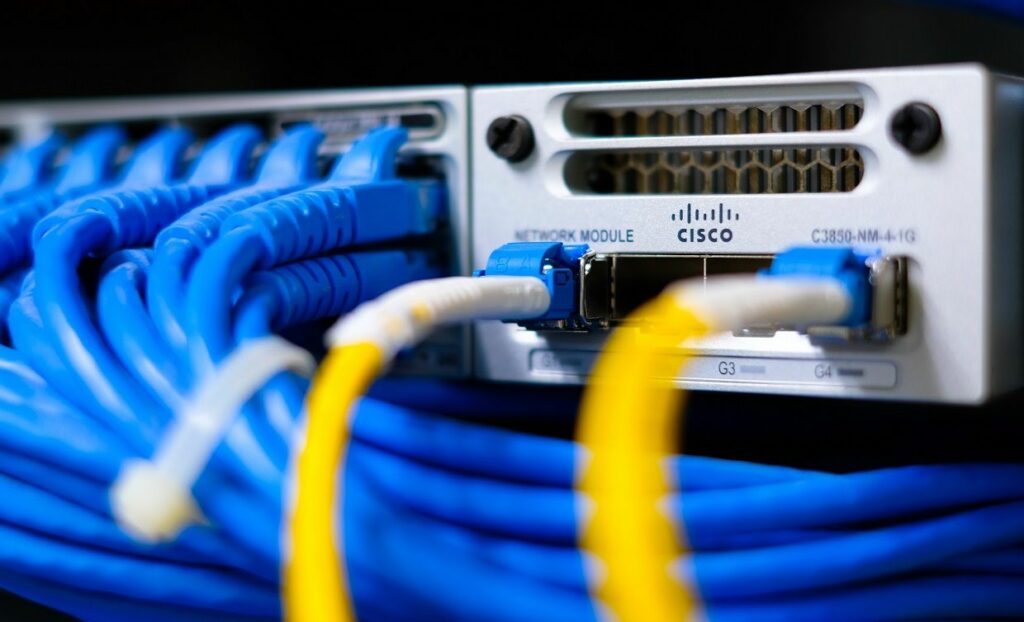
With the growing complexity of connected devices and evolving cybersecurity threats, network segmentation has become a fundamental part of a strong security posture. Cisco Meraki switches offer powerful features for securing and organizing internal traffic, one of the most effective being Meraki port isolation.
By enabling port isolation in Meraki switches, IT administrators gain a simplified yet robust method for securing east-west traffic within VLANs. Unlike traditional VLAN setups that require complex routing rules, port isolation in Meraki switches prevents communication between selected devices on the same VLAN while still allowing necessary upstream access. This makes it a highly efficient tool for traffic control, especially in dynamic or multi-tenant environments.
Beyond the technical mechanics, isolating switch ports offers a host of real-world benefits. It reduces the attack surface by limiting lateral movement, supports strong network segmentation, and helps prevent unauthorized access between devices—especially in shared or untrusted zones like guest Wi-Fi or IoT subnets. Unlike traditional VLAN configurations, Meraki port isolation is simpler to implement and manage. With just a few clicks in the Meraki dashboard, admins can achieve enhanced control and security without introducing unnecessary complexity.

Meraki port isolation is a feature that allows switch ports to be logically separated, even if they belong to the same VLAN. When a port is set to “Isolated” on a Meraki switch, it can no longer communicate directly with other isolated ports on the same VLAN. However, all isolated ports can still communicate upstream with gateway devices, such as routers or firewalls. This ensures critical access to the internet or centralized resources, while preventing peer-to-peer threats or data snooping.
This feature is fundamentally different from VLAN segmentation. VLANs break networks into separate broadcast domains, requiring routing between them. In contrast, port isolation in Meraki keeps devices within the same VLAN but blocks local communication between them. This is especially useful when you need to restrict internal visibility while keeping devices on the same subnet—for example, in environments with DHCP or centralized security logging.
A common use case for Meraki port isolation is in guest networks, where you want to prevent one guest device from seeing or communicating with another. It’s also ideal for Internet of Things (IoT) deployments, where smart devices need internet access but not mutual connectivity. BYOD (Bring Your Own Device) scenarios are another area where Meraki port security paired with isolation helps limit exposure from potentially compromised endpoints.
To enable port isolation in Meraki, start by logging into your Meraki dashboard:
This change takes effect immediately, and isolated ports will now be restricted from communicating with each other, even if they remain in the same VLAN.
Once enabled, isolated switch ports can still send traffic upstream—to the default gateway, internet, or servers on other VLANs. However, they are blocked from sending traffic directly to other devices configured as isolated on the same switch or stack. This prevents lateral movement, one of the primary ways malicious actors spread within a compromised network.
If two devices are both plugged into isolated ports and try to ping each other or share files locally, they’ll be blocked. But both can still access external resources, such as a cloud server or DNS provider.
When deploying Meraki port isolation, proper documentation is key. Note which ports are isolated, why, and when the change was made. Keep track of affected devices to avoid confusion later during troubleshooting.
Use network monitoring tools within the Meraki dashboard to observe traffic from isolated ports. Watch for errors or connectivity issues, especially with IoT or legacy devices that may behave unpredictably with port isolation enabled.
If you encounter connectivity issues after enabling port isolation, check the following:
Misconfiguration is rare but possible—especially in switch stacks or when combined with other security features like ACLs or 802.1X. Always test thoroughly in a staging environment if available.

Meraki port isolation is even more powerful when paired with other Meraki port security features. Features like 802.1X authentication, MAC address whitelisting, and sticky MAC binding prevent unauthorized devices from accessing your network through physical switch ports. Isolation restricts communication, while port security controls access.
Combining port isolation in Meraki switches with port security mechanisms ensures that only approved devices can connect—and once connected, they can’t snoop or interfere with others. For instance, MAC whitelisting ensures only specific endpoints can connect, and ACLs can further define what services or IP ranges are reachable.
Security is much stronger when multiple layers are in place. Use VLANs for broad segmentation, Meraki port isolation for fine-grained traffic control, and ACLs or firewall rules to control application-layer access. Meraki’s cloud-native dashboard lets you configure, monitor, and audit all of these from one interface.
To maintain security over time, configure logging and alerts for isolated port activity. Meraki supports integration with SIEM tools and generates alerts when unauthorized access attempts or abnormal traffic patterns are detected. Apply role-based access control (RBAC) to limit who can alter isolation settings, and review logs regularly for compliance.
Port isolation in Meraki is not a one-size-fits-all solution. Compared to VLANs, Access Control Lists (ACLs), or Private VLANs (PVLANs), isolation offers fast deployment and minimal complexity. VLANs separate broadcast domains, ACLs filter traffic at a protocol level, and PVLANs (typically on more advanced platforms) offer similar isolation within VLANs but require more setup.
Choose port isolation when you need simple lateral traffic blocking within the same subnet. For example, in shared workspaces, public-facing kiosks, or IoT-heavy networks, port isolation provides strong protection with minimal administrative overhead.
Real-world applications include guest Wi-Fi networks in hotels or campuses, where each user should be isolated. In healthcare or retail, where many smart devices share the same VLAN, Meraki port isolation keeps them from inadvertently exposing data or being used as attack vectors. It’s also useful for meeting certain compliance requirements, like PCI DSS, which require segmentation of sensitive devices.
For threat protection, restructuring network traffic using Meraki port isolation is a smart, scalable move. It empowers IT teams to lock down lateral communication without redesigning the entire network or adding unnecessary complexity. The result is a cleaner, more secure network architecture that’s easier to manage.
To get the most out of Meraki port isolation, document configurations, monitor performance, and combine it with other Meraki port security features. With tools like 802.1X, MAC whitelisting, VLANs, and access policies, you can build a layered defense that adapts to both enterprise and SMB needs. Explore the full potential of Cisco Meraki’s switching capabilities to stay ahead of security challenges and future-proof your infrastructure.
Don’t forget that you can always contact Stratus Informational Systems and our experts will help you.

Stay informed about our newest releases and updates